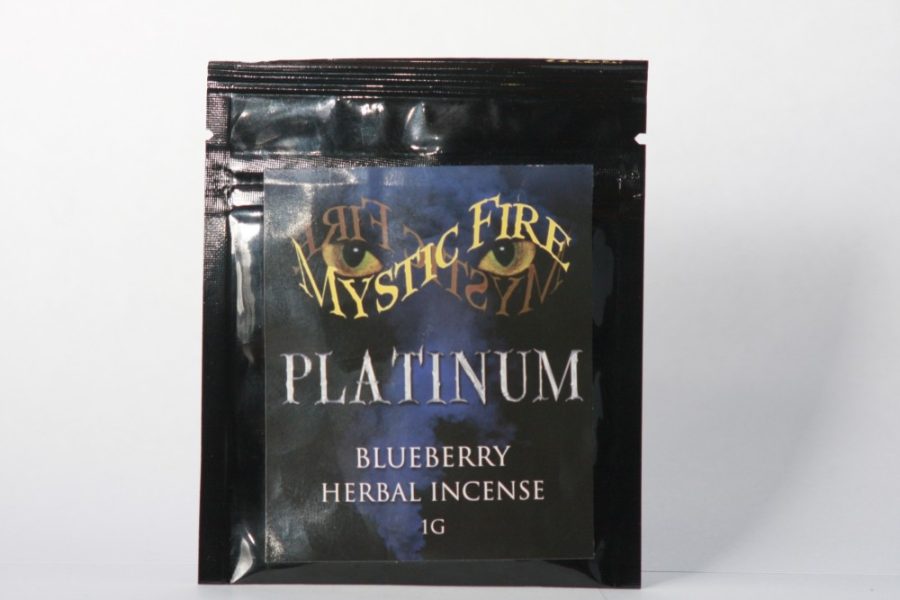If it looks like marijuana and it smells like marijuana and it gets you high like marijuana, then maybe it is “”spice.””
Spice, also known as K2, is the generic name for a legal, synthetic form of marijuana that is both produced and sold in Tucson.
Spice is sold at head shops and it is often marketed as an herbal incense blend. At Moon Smoke Shop, a head shop on Fourth Avenue, customers can buy a gram of Tucson-produced Blue Moon Cherry herbal incense for $13.75.
The fact that spice is selling for $14 a gram, sometimes more, suggests to some that people aren’t buying it for its fragrance.
“”I was under the impression that people were using it to get high, not smelling it in their apartment,”” said Mahala Lewis, a studio arts and anthropology junior.
Like marijuana, spice can be mixed with tobacco and rolled into a joint or smoked directly from a pipe or bong. The drug contains synthetic cannabinoids that target the same receptors in the brain as tetrahydrocannabinol, or THC, the active ingredient in marijuana.
“”The chemical in spice was originally developed in a lab as a liquid, marijuana-like substance that could be used to study the effects of marijuana,”” said Keith Boesen, the managing director of the Arizona Poison and Drug Information Center, which is run through the UA college of pharmacy. “”Then this product ended up in Europe for a while for various uses. Then it came back to the United States where it is sprayed onto plants and then sold as an incense that people end up smoking.””
The American Association of Poison Control Centers has reported that they have seen a large increase in the number of spice-related calls this year. So far in 2010, there have been 567 spice-related calls, compared to 13 last year. People who are hospitalized due to spice are often extremely anxious and have abnormally high heart rates. Arizona has seen 20 spice-related hospitalizations since the beginning of the year, half of which were in the Tucson area, Boesen said.
The exact composition of a packet of spice remains somewhat unclear and it seems to vary by brand.
A 2008 analysis of spice by THCPharm, a German pharmaceutical company, not only called into question whether it contains the specific herbs that manufacturers claim it does, but also revealed that the active chemical in a number of tested brands was actually a synthetic cannabinoid known as JWH-018, according to a Jan. 15, 2009 article by the Royal Society of Chemistry.
JWH-018 derives its name from John W. Huffman, a Clemson University organic chemist, who first synthesized the chemical for research purposes in 1995. According to the article, JWH-018, though chemically distinct from THC, binds to the same receptors in the brain and has been shown to cause similar effects to THC in animals.
Many of the pure chemicals used in spice, including JWH-018, are available for sale online.
This year, eight states have already banned spice and at least six more have introduced pending legislation to do the same. Last Tuesday, Missouri became the latest state to prohibit spice when Gov. Jay Nixon signed a bill that criminalized possession of the drug.
While spice targets the same brain receptors as marijuana, the health effects are not symptoms normally associated with marijuana.
“”Patients become very agitated; they experience muscle movement disorder, hallucinations and seizures. In some patients, there is a lot of vomiting and feeling really nautious,”” Boesen said. “”We have also seen respiratory problems or lung inflammation.””
Boesen also emphasized that because spice originates from such a wide variety of manufacturers, it is hard to be sure exactly what people are smoking when they smoke spice.
“”Depending on where the chemical was made it may not be pure, it may have possible contaminants in the plants as well,”” Boesen said. ””It’s kind of a very crude, imperfect delivery system.””
Despite the uncertainty surrounding the drug, spice remains legal in Arizona and curious customers will continue to sample the marijuana substitute.
Said creative writing senior Tim Broom: “”I’ll try anything once, except for heroin.””









